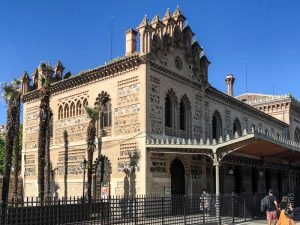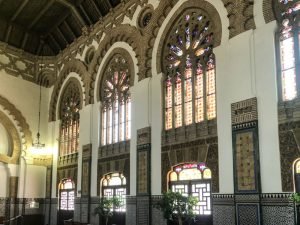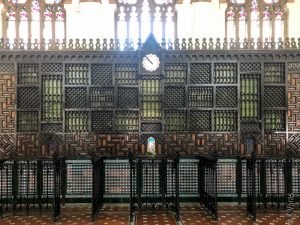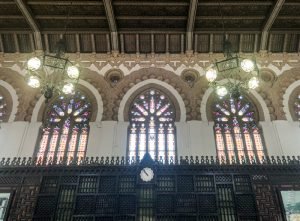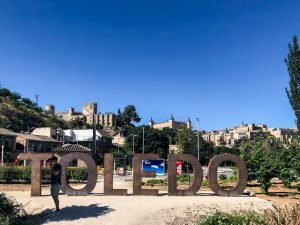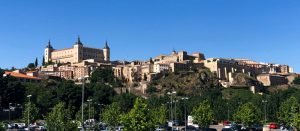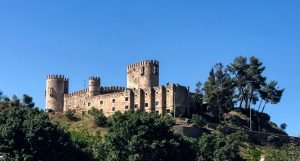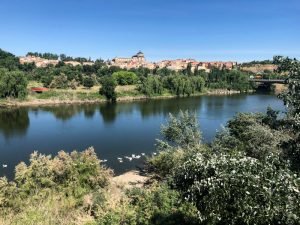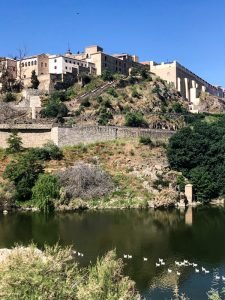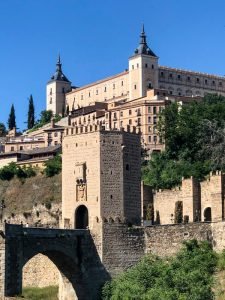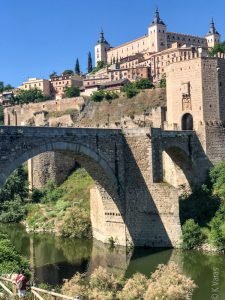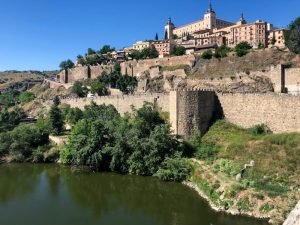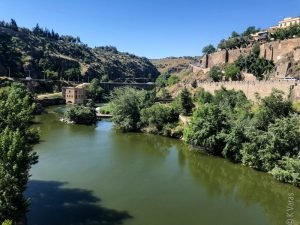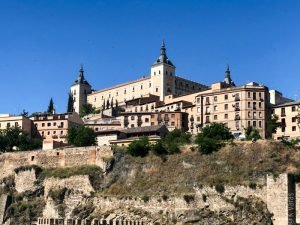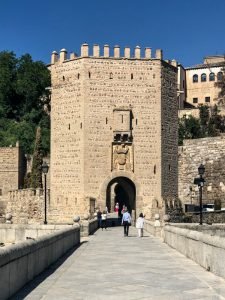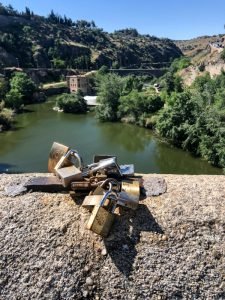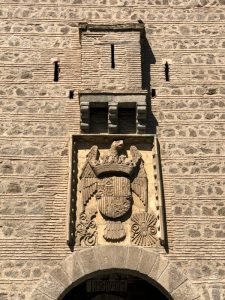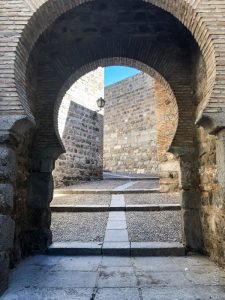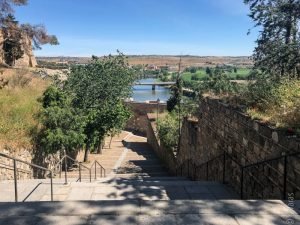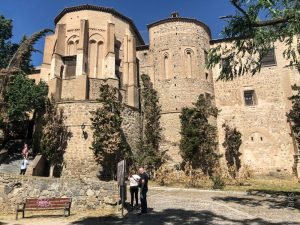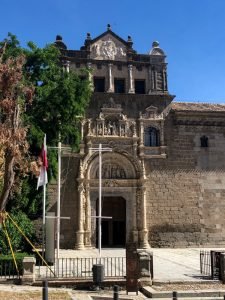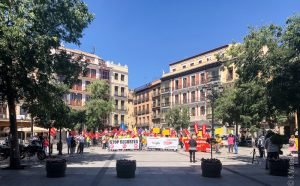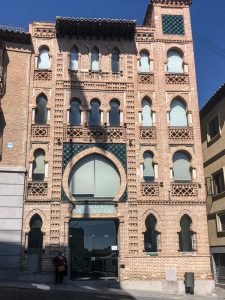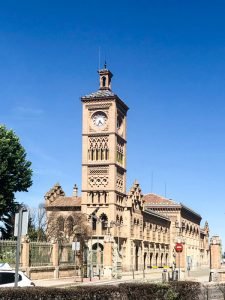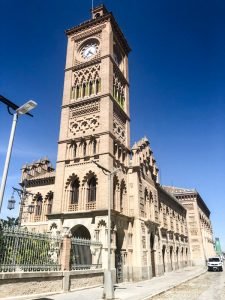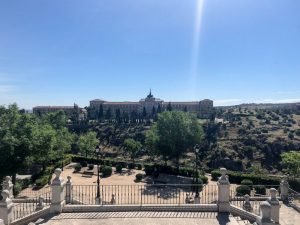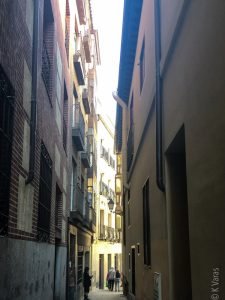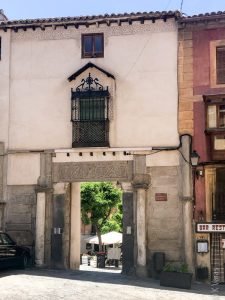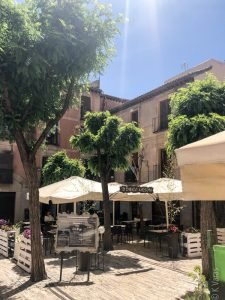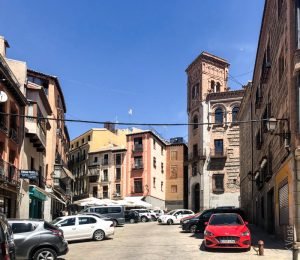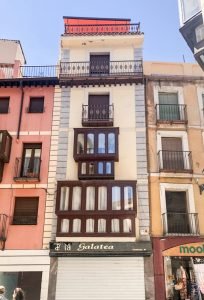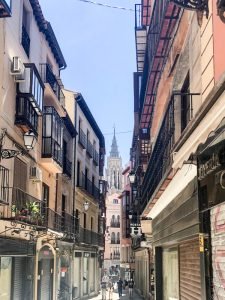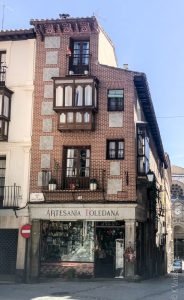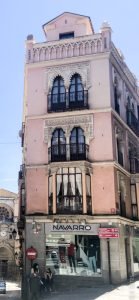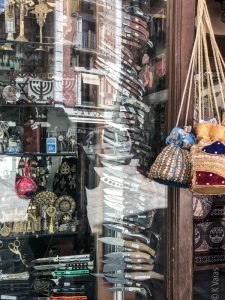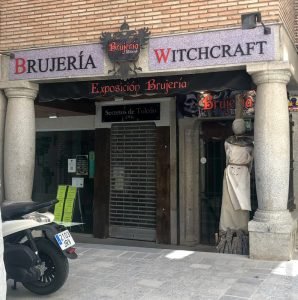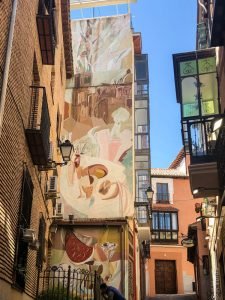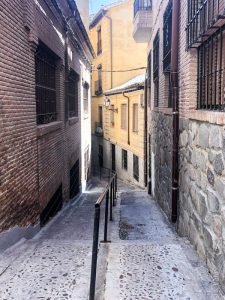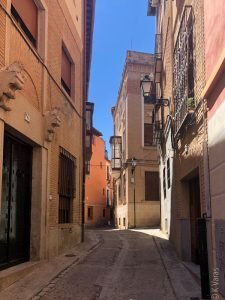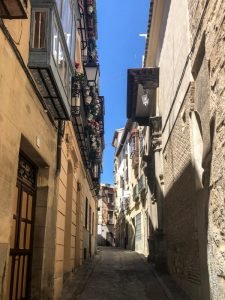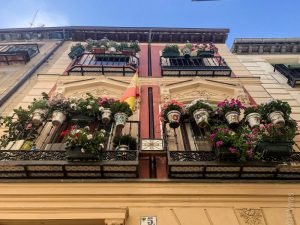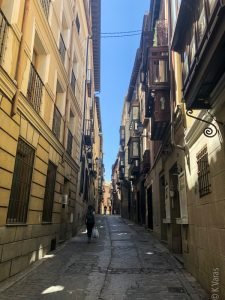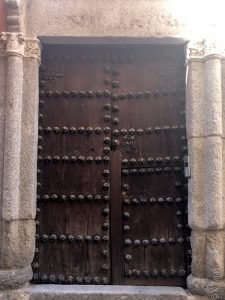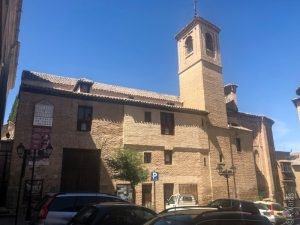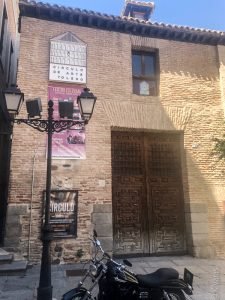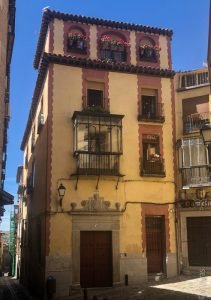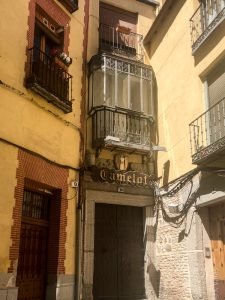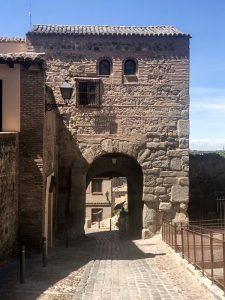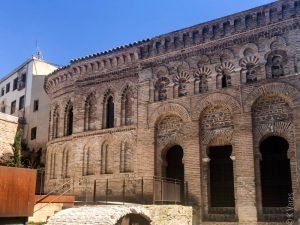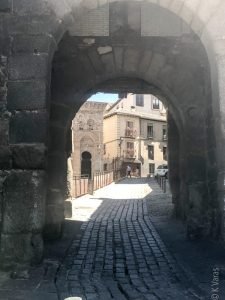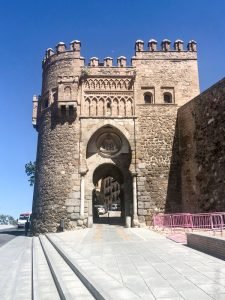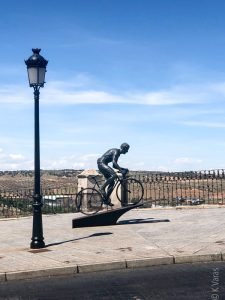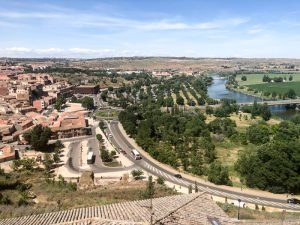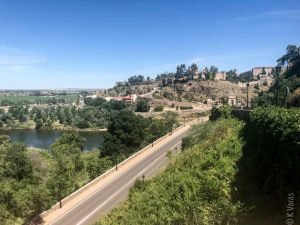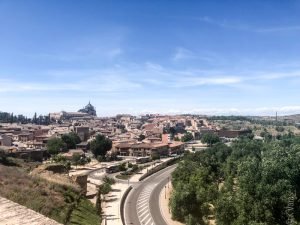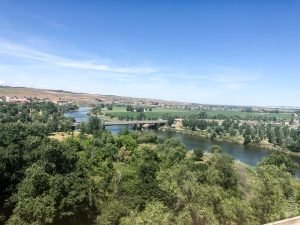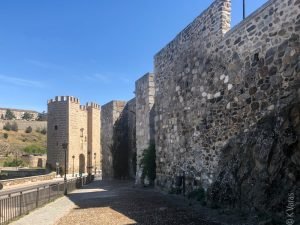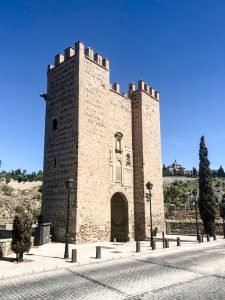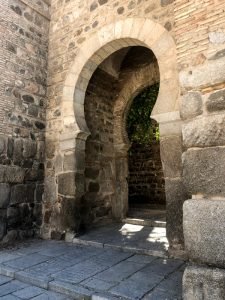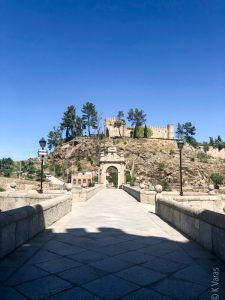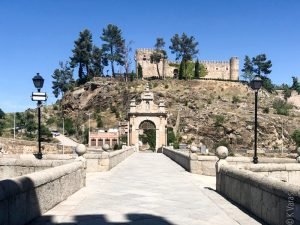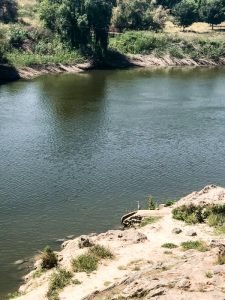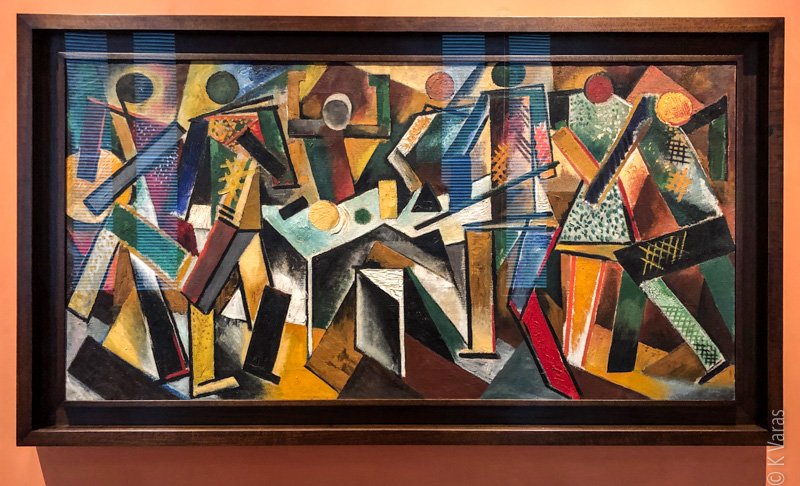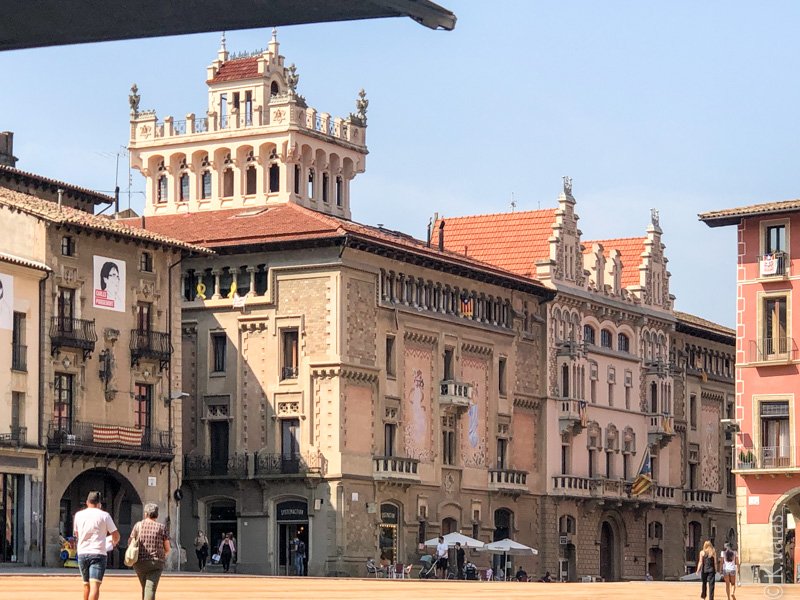
Holy Toledo!
Holy Toledo, indeed! I’m not sure what I expected from this city–I knew it was important historically but that was pretty much it. Fortunately I have learned more about it now. Toledo is definitely one of Spain’s most magnificent cities. It sits dramatically atop a gorge overlooking the Río Tagus, in the autonomous community of Castilla-La Mancha. It was known as the ‘city of three cultures’ in the Middle Ages, a place where Christian, Muslim, and Jewish communities peacefully coexisted. Imagine that. Its other nickname is the Imperial City and that bit of history goes back to the days of King Charles V, Holy Roman Emperor. Of course the city is much older than that, having been a strategic point for more than two millennia. The Romans thought it was important enough geographically, and later it was the capital of the Visigothic kingdom (between 542 and 725 CE). I was looking for something old and I certainly found it.
I took the train there, from Atocha, and it was a mere half hour long trip. It promised to be a glorious day and I noticed that there were a lot of people thinking this was a good day for a visit as well. As we all filed out through the Estación de Toledo Adif we were almost all colliding into each other as the beauty of the interior hit us all at once. I’ve seen a few train stations in the last few months but this one definitely takes the cake. It was designed by architect Narciso Clavería y de Palacios in the Neo-Mudéjar style and built at the turn of the XX century and it is gorgeous: I really believe all public utility buildings should be mandated to be this pretty:
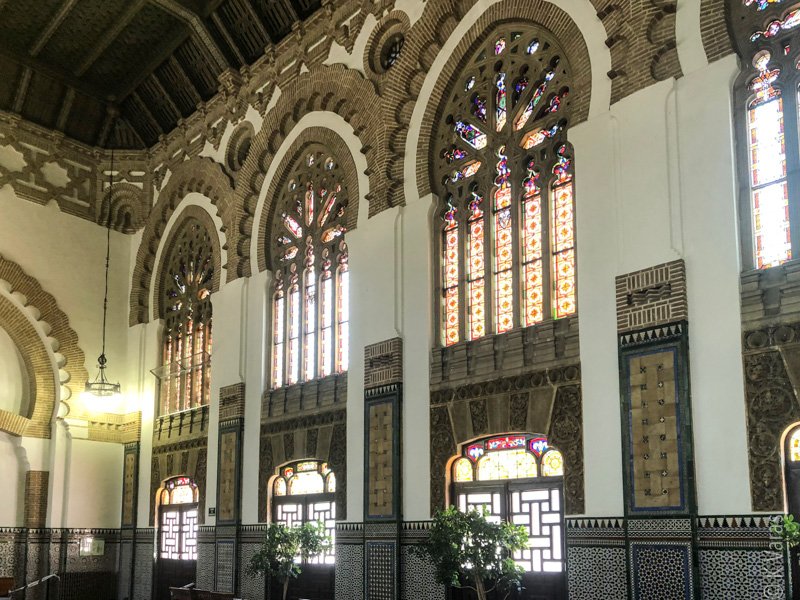
I had checked how to get from the station to the old town before I came and decided a bus ride would probably be OK, so I asked a couple of ladies at the bus stop how much the bus was. Despite their standing at the stop they were unable to tell me the price of the bus but said that it’s really not that far to the escalators that would take me up to the top of the hill. I was a little confused by the “escalator” bit, thinking I misunderstood but I also believed them that it wasn’t very far. So I decided to walk, especially since the scenery promised to be more than pleasant. I wasn’t wrong: besides the fantastic view up to the Alcázar, the winding river creates views down below that are just as pretty. I walked along the river to an ancient-looking bridge. Puente de Alcántara dates back to Roman times and even though it has been destroyed various times by wars, the residents have always reconstructed it.
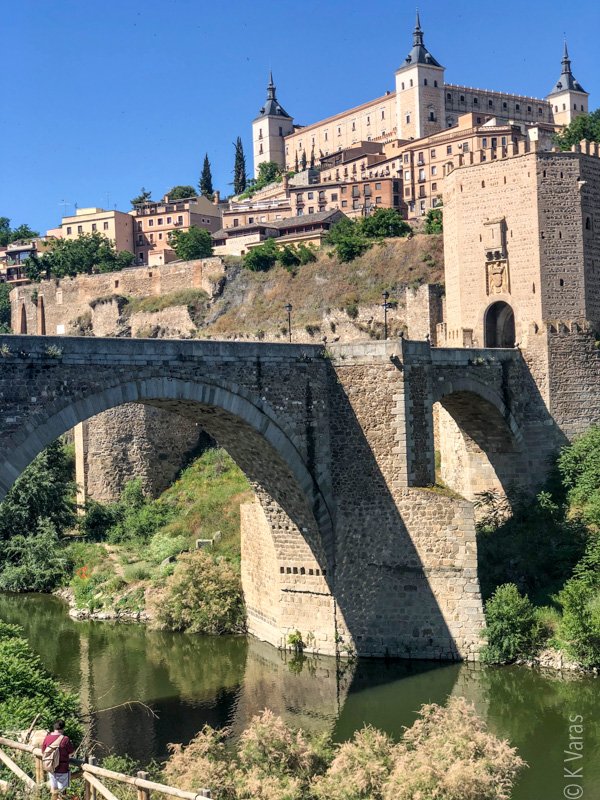
After crossing this very romantic bridge over the Tagus, I was faced with a decision: either follow some people and climb the stairs to the left or go right and start climbing the much-higher (though probably with much better views) stairs on the right. I didn’t see any escalators so now I was more certain I had totally misunderstood that bit earlier. I should really do a better job studying the topography of towns I visit and prepare for the possibility of stairs. As it was, I decided I would just bite the bullet and climb, though I did follow the older couple who went left and not the young one who went right. The reward for this decision was a very manageable route by the Convento de la Concepción Francisca and Museo de Santa Cruz where many of El Greco’s (a Toledo native) paintings are. I did not go in, however; I had spotted a statue of Miguel de Cervantes and a plaza beyond it, instead. Through Arco de la Sangre I reached Plaza Zocodover, the historical heart of the city. It’s not a very big plaza and I didn’t hang around it long, mainly because there was some sort of protest going on and I didn’t want to get in the way. Instead I went up what looked like a main street towards the famous Alcázar, that massive building that so dominates Toledo’s skyline, but more about that in the next post.
After the Alcázar, I was hungry and started the always-frustrating search for a place to eat. As I walked down the little streets near the museum I came across a small plaza and a restaurant with a shaded terrace. There was something very quaint about this place–I simply had to try it. And it was a good thing I did. I ordered the Toledo specialty, carcamusas caseras, which is a traditional pork stew with seasonal vegetables with tomatoes and bay leaves. Mine also included beans and it was delicious. Since I ordered the menú, I also had a very yummy gazpacho and, later, some outstanding cheese flan. Sometimes I luck out, even when I’m by myself.

The next part of the plan was, of course, to walk off that amazing meal. As usual, the streets of Toledo were practically empty, all the better to not look like a lost tourist when I, inevitably, got lost accidentally on purpose. I went this way and that way, turning into streets wherever fancy took me, stumbling onto interesting little stores, churches, and monuments. As I walked around I could see the transitions from the Christian to Muslim to Jewish neighbourhoods, as well. Eventually I ended in the northern part of the old city, by the Mezquita del Cristo de la Luz, an old mosque that was converted to a church, which led me to medieval Puerta del Sol. The views from that side were amazing too, I bet on a clear day you could see Madrid … about 70km away. Nah, probably not, but it is a pretty flat and direct route to the new capital. This is also where I came across a statue of a bicyclist, all alone, looking over the land. It was a monument dedicated to Federico Martín Bahamontes, el águila de Toledo, or the Eagle of Toledo, a native of Toledo, a famous professional cyclist who won the 1959 Tour de France and many other stages and races. He’s 92 now and since he was a climbing specialist, I wonder if he still enjoys all the hills in his hometown.
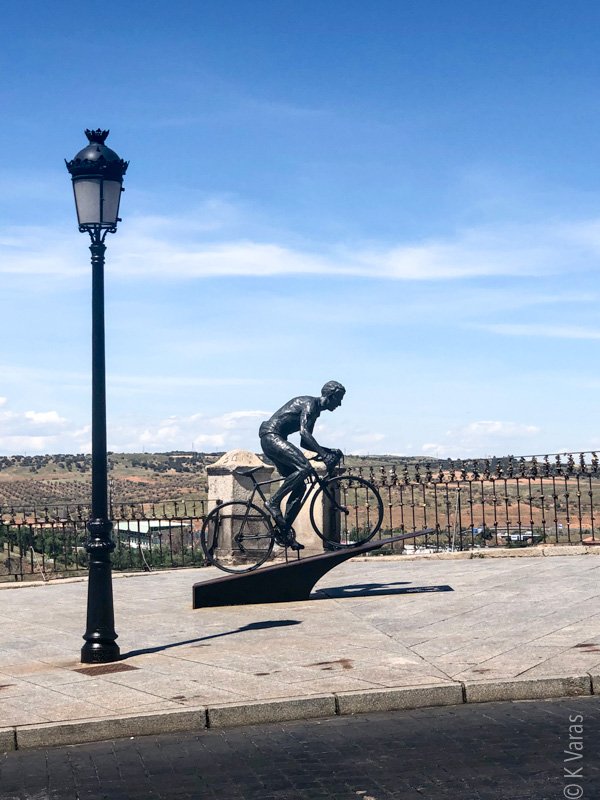
Speaking of hills, I finally figured out that the escalators I was told about earlier were, in fact, real! Some very brilliant person or persons had them built on the side of the mountain that is old Toledo, making access so much easier, at least on foot. Not being a fan of stairs on the way down, I decided to try these and after descending some four or five very tall flights, I emerged at basically river level at a road that took me right back to the Puente de Alcántara I used earlier. I had come full circle, sort of. I’m sure there were plenty of things I missed along the way; a few hours in a city like Toledo is definitely not enough, but I loved everything I saw with the tiny exception of the smell. It’s not that the city smelled bad, it just smelled old, as in mouldy old. Of course this is a very old city, so I’m not sure why this would be a surprise, but my nose had a wee problem with it. Olfactory issues notwithstanding, I would like to go back with a bit more time to check out more of the hidden gems, specifically el Greco’s museum (he’s also a native), Cuevas de Hércules (ancient Roman caverns), as well as some of the various religious buildings which I totally ignored on this visit (there were just so many of them!). I also want to go back when I can actually buy a souvenirs and not worry about their weight: historically Toledo was quite famous for its production of bladed weapons, which explains why so many stores have whole walls full of shiny and pointy knives, among other cool things. Oh, to be able to purchase items that weigh more than postcards!
The first gallery below is of Toledo, the city only. Pictures of the Alcázar and the Military Museum can be found in the Gallery. (For some reason the first gallery would not load fully here if two galleries are placed together, sorry.)



